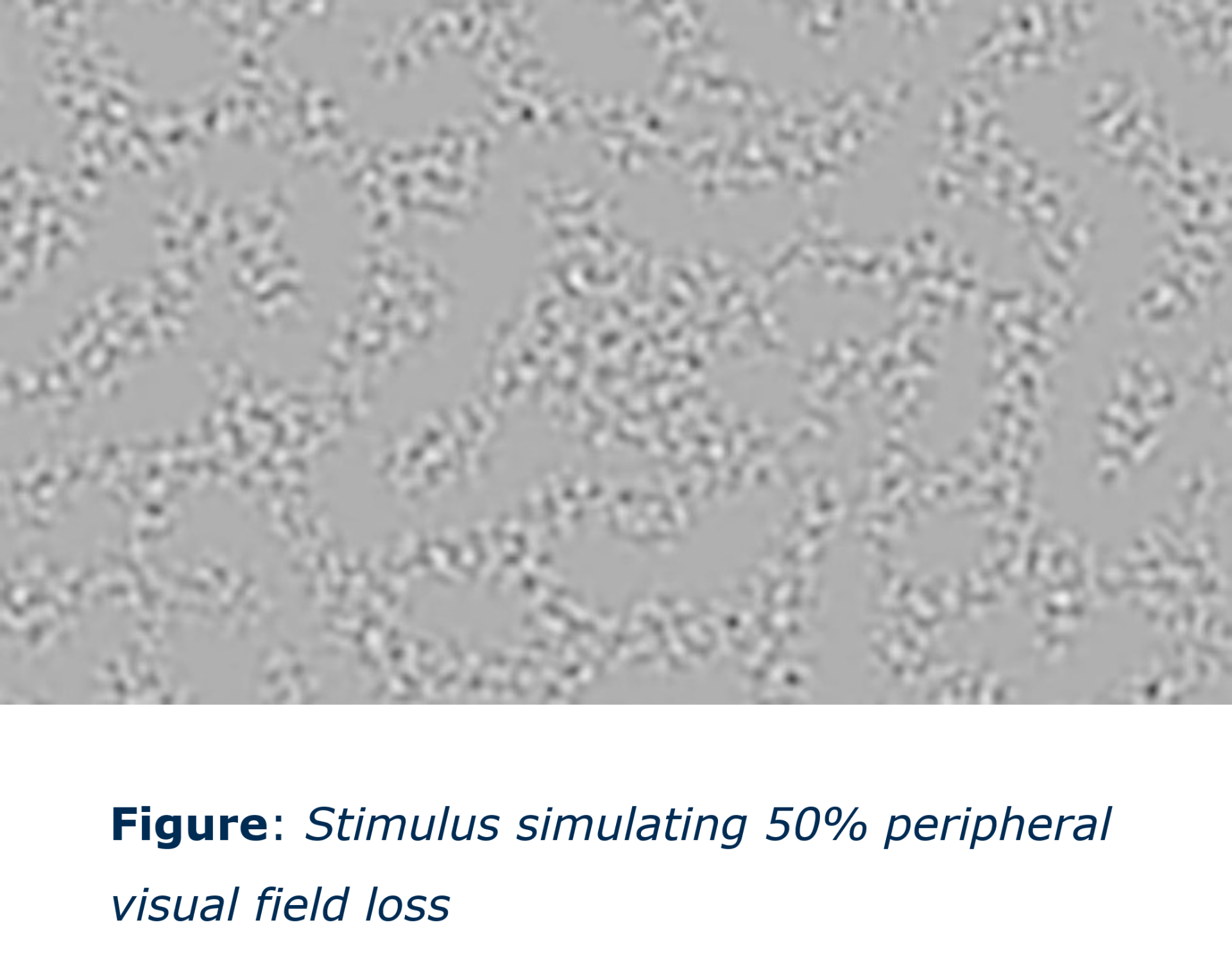Using eye movements to signal loss of peripheral vision in glaucoma
Optokinetic nystagmus (OKN) is a reflexive eye movement that happens when we see movement. We have been measuring how OKN changes when we simulate a loss of peripheral vision, as occurs in glaucoma. We are doing this to determine whether OKN could be used to detect glaucoma earlier.
We simulated loss of peripheral vision by removing parts of a moving pattern (the grey “blobs” shown on the right). We found that as we removed more and more of the moving pattern, OKN became weaker and weaker. Overall, our findings suggest that OKN has the potential to measure a reduction in peripheral vision (independent of other kinds of loss of vision) as part of a rapid, automated screening process for glaucoma.

